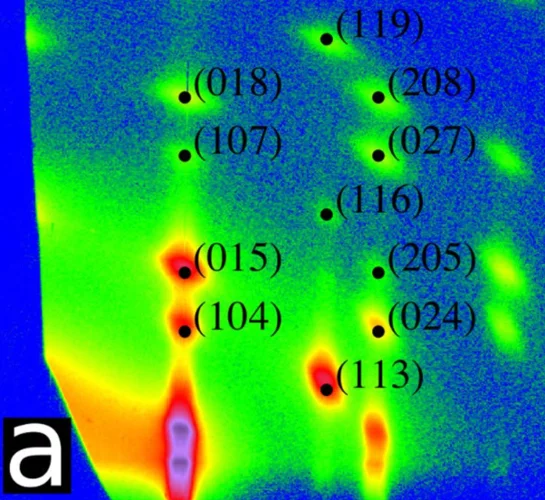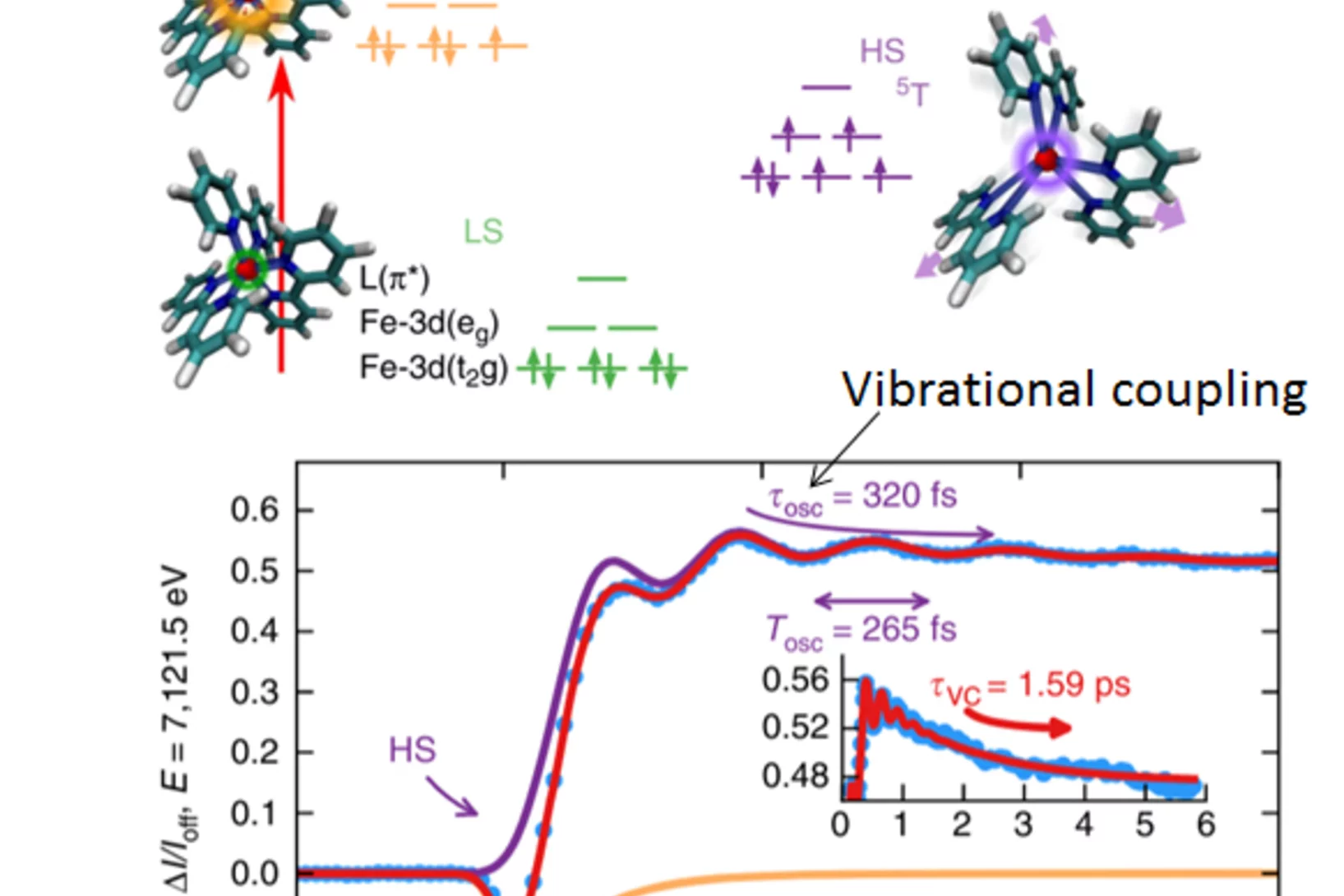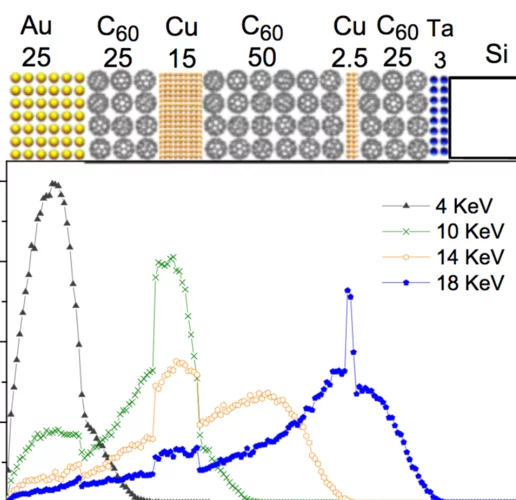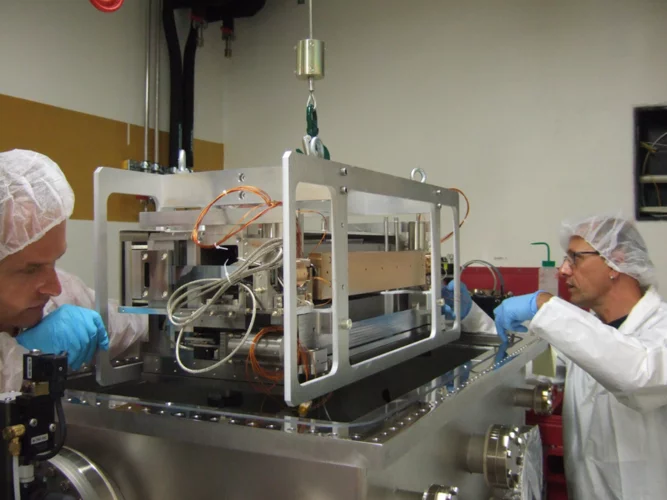At PSI, several projects are dedicated to important research questions concerning the Sars-CoV-2 coronavirus and the resulting diseases. We provide information on activities and projects, for example on investigations of lung tissue, on the production of proteins and antibodies or on ideas for new research on Covid-19.
Useful links
Lucia Romano gives an invited talk at EIPBN 2017
Lucia Romano (guest professor at ETH and guest scientist at TOMCAT) has just returned from the largest conference devoted to electron, ion and photon beam technology and nanofabrication (EIPBN) in US, where she gave an invited talk about “Fabrication of high aspect ratio metal gratings for X-ray phase contrast interferometry”.
Big help for small children
When small children develop cancer, the whole family is affected. Staff at the Paul Scherrer Institute PSI’s Centre for Proton Therapy combine target-oriented proton beam irradiation and a caring, warm-hearted atmosphere to help these children.
Poster Prize for Marcin Gorzny at the Swiss Nanoconvention 2017
Dr. Marcin Gorzny, Post-Doc at LMN in the PSI career return program recieved a poster prize at the Swiss Nanoconvention 2017 for his contribution entitled: "Silicon chip as lipid membrane holder for serial crystallography experiments".
Superlattice growth and rearrangement during evaporation-induced nanoparticle self-assembly
Understanding the assembly of nanoparticles into superlattices with well-defined morphology and structure is technologically important but challenging as it requires novel combinations of in-situ methods with suitable spatial and temporal resolution.
Coupled multiferroic domain switching in the canted conical spin spiral system Mn2GeO4
Despite remarkable progress in developing multifunctional materials, spin-driven ferro-electrics featuring both spontaneous magnetization and electric polarization are still rare. Among such ferromagnetic ferroelectrics are conical spin spiral magnets with a simultaneous reversal of magnetization and electric polarization that is still little understood. Such materials can feature various multiferroic domains that complicates their study.
Successful PhD Defense
Johannes Schindler successfully defended his PhD at the University of Bern, entitled "An Extraction System for Radiocarbon Microanalysis of Dissolved Organic Carbon in Glacier Ice". The project was jointly funded by the University of Bern and the Paul Scherrer Institut.
SPS Award in Applied Physics awarded to Waiz Karim
The SPS 2017 Prize in Applied Physics is awarded to former member of the van Bokhoven Group Waiz Karim for his PhD thesis entitled "Metal nanostructures and their catalytic properties using top-down nanofabrication and single particle spectroscopy" which was honored with his 1st author publication "Catalyst support effects on hydrogen spillover" by W. Karim, C. Spreafico, A. Kleibert, J. Gobrecht, J. VandeVondele, Y. Ekinci, J. A. van Bokhoven, Nature, 2017, 541, 68–71.
Isomer-Selective Generation and Spectroscopic Characterization of Biofuel Intermediates
Online combustion analysis relies heavily on spectral data to detect reactive intermediates isomer-selectively to establish e.g. kinetic flame models. Due to the difficulty to generate these species cleanly, spectral data are rather scarce. Here we report on the selective generation of three picolyl radical isomers (C5H4N-CH2*) by deamination of aminomethylpyridines. Picolyl radicals are relevant in biofuel combustion, and could now be characterized by threshold photoelectron spectroscopy using synchrotron radiation. Vibrationally resolved bands and distinct ionization energies allow for isomer-specific detection of these elusive species in complex environments and permit us to explore new avenues in soot- and NOx formation kinetics.
Fate of Plutonium through a Geological Reactive Barrier
Natural geological and engineered barriers play a key role in protecting the environment and the anthroposphere from the hazardous impact of deposited waste or spreading contaminants. Such natural geological and engineered barrier materials are commonly complex and heterogeneous. In-situ multimodal microscopic studies under conditions relevant to deep geological formations are crucial to identify the reactive components and reaction pathways or to validate proposed immobilization mechanisms. The present study demonstrated that a simplistic description by a sole reactive component is not an adequate representation of the geochemical reactivity responsible for the immobilization of plutonium within a natural Clay Rock barrier. Multimodal chemical imaging studies on intact, undisturbed systems are absolutely essential to ascertain the geochemical reactivity for relevant geochemical conditions and settings.
To the limits of the feasible
The company Daetwyler made the undulators for the X-ray free-electron laser SwissFEL of the Paul Scherrer Institute PSI, to a precision of one-tenth of the width of a hair.
Observing switching of Molecules using Free Electron Lasers
Free electron lasers (FELs) like SwissFEL help scientists to understand the mechanisms that switch properties of materials which are the basis for functions in electronics, solar cells, chemistry and biology. By using ultrashort X-ray pulses it becomes possible to visualize the ultrafast rearrangements of electrons and atoms that enable the properties to switch in molecules or crystals. An international consortium of researchers lead by Paul Scherrer Institute, Université de Rennes, and SLAC National Laboratory has now visualized the entire cascade of processes that lead to a change of the magnetic moment of electrons in a molecule within one trillionth of a second (10-12 s = 1 picosecond), using the FEL at Stanford, California (LCLS).
Additive Nanofabrication with Focused X-rays
Metal nanostructures can be fabricated by irradiation of suitable metal organic precursor molecules with a focused X-ray beam. This novel techniques offer the advantage of energy-selective deposition by switching of the incident photon energy due to the non-linear photon absorption cross-section of the precursor molecules for resonant excitation.
Observing switching of Molecules using Free Electron Lasers
Free electron lasers (FELs) like SwissFEL help scientists to understand the mechanisms that switch properties of materials which are the basis for functions in electronics, solar cells, chemistry and biology. By using ultrashort X-ray pulses it becomes possible to visualize the ultrafast rearrangements of electrons and atoms that enable the properties to switch in molecules or crystals.
Towards understanding of human betacoronavirus HKU1 life cycle
Researchers from China and USA join forces with Swiss Light Source (SLS) macromolecular crystallography (MX) beamline scientists in a study, which aims at understanding an important step in the life cycle of the human betacoronavirus HKU1.
Monte Carlo Simulation of Scintillation Detector for Spent Fuel Characterization in a Hot Cell
Spent fuel characterization is necessary to improve nuclear fuel design, optimize core refueling patterns and manage the handling, transport and storage of spent fuel assemblies. The experimental characterization of spent fuels includes measuring their gamma and neutron emissions typically with high-purity Germanium and He-3 detectors. In the past few years, however, efforts to develop efficient and low-cost, fast and thermal, neutron detectors have guided the research to the development of new scintillation detectors. These scintillators offer good efficiency, fast-timing properties, and good pulse shape discrimination capabilities for dual gamma and neutron detection. Within the Laboratory for Reactor Physics and Thermal-Hydraulics (LRT), a preliminary analysis was performed through Monte Carlo simulations to design a measurement unit at the HOTLAB based on new scintillators for the detection of fast neutrons emitted by spent fuel. This semester work of Marianna Papadionysiou was presented at the ANS Student conference in April and received two awards for "Best Detection and Measurement" and "Best Overall Research".
Wafer-thin Magnetic Materials Developed for Future Quantum Technologies
For the first time, researchers have produced a wafer-thin ferrimagnet, in which molecules with different magnetic centers arrange themselves on a gold surface to form a checkerboard pattern. Scientists at the Paul Scherrer Institute, in collaboration with their research partners, published the findings in the journal Nature Communications.
Realization of a combined band-Mott insulator
For decades, the mechanism of Mott phase in Ca2RuO4 has puzzled researchers. This material is a paradigmatic case of multi-band Mott physics including spin-orbit and Hund's coupling. Progress has been impeded by the lack of knowledge about the low-energy electronic structure. With our recent contribution, we provided-- using angle-resolved photoemission electron spectroscopy -- the band structure of the paramagnetic insulating phase of Ca2RuO4.
Distinct, but not so different
Among superconducting materials, CeCoIn5 stands out as a rare case where superconductivity gives rise to magnetic order. An international team led by PSI physicist Michel Kenzelmann now reports that when small amounts of impurities are implanted into CeCoIn5, then two distinct magnetic phases appear — and these are surprisingly similar to one another.
Pressure-induced magnetic order in FeSe: A muon spin rotation study
The magnetic order induced by the pressure was studied in FeSe by means of muon spin rotation (μSR) technique.
First lasing at a wavelength of 4.1 nm
The electron beam energy of SwissFEL was recently increased to above 900 MeV by successfully bringing two new accelerating modules into operation. This allowed SwissFEL to produce laser radiation for the first time in the soft x-ray regime with a photon wavelength of 4.1 nm. During the next months, the electron beam energy will be progressively further increased with the goal of enabling first user experiments at a wavelength of around 0.5 nm towards the end of this year.
First lasing at a wavelength of 4.1 nm
The electron beam energy of SwissFEL was recently increased to above 900 MeV by successfully bringing two new accelerating modules into operation. This allowed SwissFEL to produce laser radiation for the first time in the soft x-ray regime with a photon wavelength of 4.1 nm. During the next months, the electron beam energy will be progressively further increased with the goal of enabling first user experiments at a wavelength of around 0.5 nm towards the end of this year.
Emergent magnetism at transition-metal-nanocarbon interfaces
Interfaces are critical in quantum physics, and therefore we must explore the potential for designer hybrid materials that profit from promising combinatory effects. In particular, the fine-tuning of spin polarization at metallo–organic interfaces opens a realm of possibilities, from the direct applications in molecular spintronics and thin-film magnetism to biomedical imaging or quantum computing.
Successful PhD Defense
Astrid Waldner has been awarded a PhD at the ETH Zurich for her thesis entitled, "Molecular level picture of the interaction between ice and trace gases". The project was funded by the Swiss National Science Foundation and lead by Thorsten Bartels-Rausch.
Determination of Conduction and Valence Band Electronic Structure of LaTiOxNy Thin Films
The nitrogen substitution into the oxygen sites of several oxide materials leads to a reduction of the band gap to the visible-light energy range, which makes these oxynitride semiconductors potential photocatalysts for efficient solar water splitting. Oxynitrides typically show a different crystal structure compared to the pristine oxide material.
First SwissFEL Mirror Units ready to take X-rays
On May 11, 2017 the vacuum chambers of the first two offset mirrors have been closed eventually with the final gold- wire gasket and pumped down to ultra- high vacuum (goal: 1e-9 mbar). These mirrors are the key elements to switch the X-rays between the experimental stations. In pink beam mode they are the only optical elements for the X-rays on their way from the undulator down to the Alvra experiment.
Unconventional magnetic order in the conical state of MnSi
In the temperature-magnetic field phase diagram, the binary metallic compound MnSi exhibits three magnetic phases below Tc ≈ 29K.An unconventional helicoidal phase is observed in zero field. At moderate field intensity a conical phase sets in. Near Tc, in an intermediate field range, a skyrmion lattice phase appears.
Quartz powder for the battery of the future
PSI materials researchers have developed a method that provides crucial insights into the charging and discharging processes of lithium-sulphur batteries. And the method revealed: with quartz powder added to the battery, its available energy increases and the gradual loss of capacity is much weaker.
Anomalous Thermal Conductivity and Magnetic Torque Response in the Honeycomb Magnet α-RuCl3
We report on the unusual behavior of the in-plane thermal conductivity κ and torque τ response in the Kitaev-Heisenberg material α-RuCl3. κ shows a striking enhancement with linear growth beyond H = 7T, where magnetic order disappears, while τ for both of the in-plane symmetry directions shows an anomaly at the same field.
Selective anaerobic oxidation of methane enables direct synthesis of methanol
On the basis of in situ x-ray absorption spectroscopy, infrared spectroscopy, and density functional theory calculations, it was proposed a mechanism involving methane oxidation at Cu II oxide active centers, followed by Cu I reoxidation by water with concurrent formation of hydrogen.
Making a valuable resource usable with water
In oil extraction sites, gaseous methane is simply burned, even though it could actually be a useful precursor material for fuels and products of the chemical industry. One way to make methane usable is to convert it to methanol. Researchers at the Paul Scherrer Institute PSI and ETH Zurich have now developed a new chemical process that allows this conversion in an efficient and inexpensive way.





























